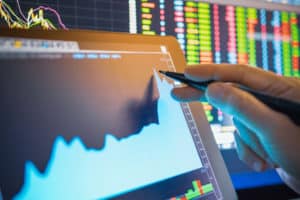 The lessons learnt during the pandemic look set to reshape the liquidity providers of the future. Remote working, greater reliance on cloud technology and the high volatility witnessed early in the pandemic have impacted how the buy-side accesses liquidity. Asset managers are looking to benefit from a wider, and more diverse, pool of counterparties to create greater optionality in how they can execute their investment strategies.
The lessons learnt during the pandemic look set to reshape the liquidity providers of the future. Remote working, greater reliance on cloud technology and the high volatility witnessed early in the pandemic have impacted how the buy-side accesses liquidity. Asset managers are looking to benefit from a wider, and more diverse, pool of counterparties to create greater optionality in how they can execute their investment strategies.
During summer 2021, Redlap Consulting spoke to 30 global heads of trading at asset managers with $35.6 trillion in assets to discover what changes buy-side firms are making, which trends are here to stay, and who the trading partners of the future will be.
The results showed 77% of respondents increased their means of accessing liquidity electronically and automated trading during the pandemic. Years of regulatory reforms combined with greater automation of equity workflows have made asset managers more self-sufficient in how they source liquidity and from whom. Meanwhile, 47% of respondents concentrated liquidity with traditional relationships with sell-side dealers during the pandemic and 53% took the opportunity to diversify their means of who they trade with to access to liquidity. Fixed income trading was more negatively impacted, some sell-side firms opted to withdraw concentrating instead on their own balance sheet and capacity to support corporates creating a vacuum which ELPs stepped in to fill.
Maintaining strong relationships with banks remains critical due to the broad range of services they offer. However, in an environment of constrained liquidity, the message from the buy-side is unequivocal; they need optionality to ensure maximum access to the liquidity available – and in fixed income that now means a more direct relationship with electronic liquidity providers.
“The pandemic and, in particular, the lockdowns accelerated a longer-term shift towards screen-based trading as people were forced to find new ways of working,” said Piebe Teeboom, secretary general of FIA EPTA. “This created a watershed moment as the buy-side engaged more with market making firms – and consequently became more appreciative of the benefits of better and more transparent prices, the constant liquidity provision and optionality the firms offer. That reappraisal and recognition – similar to a light-bulb moment – has now cemented the role of market making firms as mainstream actors in the capital markets ecosystem.”
In addition, 70% of buy-side firms interviewed acknowledge engaging more with alternative liquidity providers, although for 37%, this interaction depends on the asset class being traded. Increasingly it is becoming about matching the right flow with the right provider and it will be interesting to follow the impact this will have on brokers’ list going forward; some asset managers already stated that ELPs are creeping up in their top five providers for fixed income, a trend yet invisible a few years ago. Proposed changes by ESMA to best execution reports[1] could further lift the veil over who the liquidity providers are in the market with trading venues having to report, for non-anonymous trading systems, “the identity of the market makers” and publish information about market makers’ contribution to the execution quality of the trading venue.
“The pandemic saw asset managers focusing on their ability to ensure access to liquidity – the next stage will be focusing on how to best build on latent liquidity,” said Rebecca Healey, managing director at Redlap Consulting and co-author of the paper.
Liquidity remains the most important criteria to select brokers across asset classes. The loss of balance sheet during the pandemic propelled the buy-side to the centre of liquidity formation. Although equity markets adapted seamlessly to heightened volatility, the rise of volumes executed at the close creates challenges in sourcing intraday liquidity when it is required. The role of technology will only continue to increase to determine when, where and how to source liquidity in order to deliver best execution for end investors – wherever that resides. New tools are already being developed to capture latent liquidity such as targeted invitations and PM watch lists to create deeper sources of liquidity as volumes on lit venues remain challenged intraday.
Innovation will continue to reshape the execution landscape, moving buy-side dealing desks from passive recipients of sell-side liquidity to active participants building latent liquidity. The key differentiator for the liquidity providers of the future will be the ability to provide greater multilateral access allowing the buy-side to move away from the traditional siloed approach to trading asset classes and take greater ownership of execution irrespective of the asset they are trading. Those hampered by legacy technology will likely fall behind.